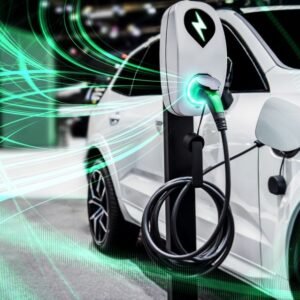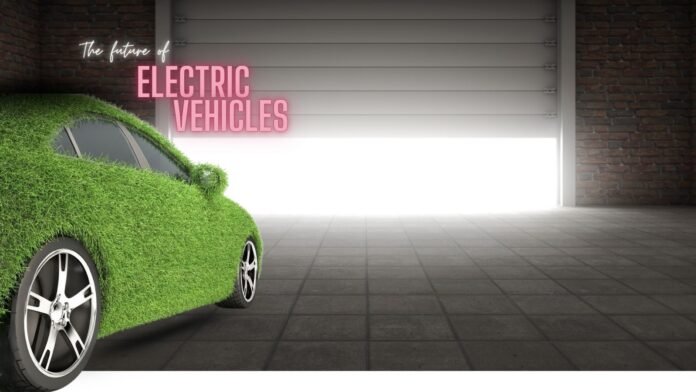Explore the future of hybrid and electric vehicles in Pakistan with insights from industry experts. Learn about the transition from hybrid to EVs, the latest models, cost factors, government policies, and the role of solar energy in EV adoption. Discover expert opinions on the viability of hybrid and electric cars in Pakistan’s evolving automotive landscape.
The Transition from Hybrid to Electric Vehicles
The global automotive industry is undergoing a significant transformation, shifting from traditional petrol and diesel engines to hybrid and fully electric vehicles (EVs). Hybrid cars have gained popularity due to their fuel efficiency, often running on battery power alone for short trips. However, the push towards fully electric vehicles is gaining momentum, particularly in Europe, where EVs dominate the market. These vehicles offer impressive mileage, with some capable of covering 300–400 kilometers on a single charge.
In Pakistan, EV adoption remains slow due to a lack of charging infrastructure. The Chinese automotive industry, the world’s largest supplier of EVs, is making efforts to address this issue.
Current Hybrid Options in Pakistan
The Toyota Prius and Aqua are among the most recognized hybrid vehicles in Pakistan. Other brands, including Nissan and Honda, also offer hybrid models, though these are still evolving towards fully electric variants. Recently, Toyota introduced the locally assembled Toyota Cross Hybrid in Pakistan.
 The Cost Factor: Hybrid vs. Electric Vehicles
The Cost Factor: Hybrid vs. Electric Vehicles
Currently, hybrid cars remain more feasible for Pakistani consumers due to the high cost of electricity. While hybrid vehicles use a combination of a fuel engine and battery, fully electric vehicles rely solely on electricity. Charging costs vary significantly. For example, an electric vehicle with a 50-kWh battery pack could cost approximately PKR 7,500 to charge at a commercial station, making long-distance travel costlier. However, installing solar panels at home can offset this expense, making electric cars a more economical choice in the long run.
Plug-in Hybrid Electric Vehicles (PHEVs) vs. Hybrid Electric Vehicles (HEVs)
Hybrid vehicles are divided into two main categories: Hybrid Electric Vehicles (HEVs) and Plug-in Hybrid Electric Vehicles (PHEVs). HEVs use a battery and motor to assist the engine, with the battery charging through regenerative braking. PHEVs, on the other hand, can be externally charged and offer extended electric-only driving range before switching to fuel.
Countries with lower electricity costs find PHEVs and EVs more viable. In Pakistan, however, the high cost of electricity relative to petrol makes hybrid vehicles a more practical option for now.
The Decline of Internal Combustion Engine (ICE) Vehicles
Petrol and diesel cars, commonly referred to as Internal Combustion Engine (ICE) vehicles, are gradually losing their dominance in Pakistan. The primary reason is the soaring fuel prices. According to Mohsin, countries with high fuel costs inevitably move toward hybrid and electric vehicles as a practical alternative.
“Right now, in Pakistan, only hybrid and electric cars have a future,” Mohsin states. “With fuel prices skyrocketing, the only viable option left for consumers is hybrid models.”
Government Policies and Local Production
Pakistan’s government has introduced incentives to promote EV adoption. For locally assembled EVs with a battery pack of less than 50 kWh, the General Sales Tax (GST) is only 1%. In contrast, smaller petrol cars like the Suzuki Alto have an 18% GST, and larger petrol vehicles (1,500cc and above) face a 25% GST.
Local manufacturers are also stepping up and are advancing EV adoption in Pakistan. Dewan Motors has introduced Honri, locally assembled electric hatchback with a 200 km range, while Regal Motors launched the Ceres 3, an electric SUV with a real-world range of about 325 km per charge. In the hybrid segment, MG Pakistan has unveiled the MG HS Plug-in Hybrid, catering to consumers seeking fuel efficiency without range anxiety.

The Role of Solar Energy in EV Adoption
Solar energy plays a crucial role in accelerating the adoption of electric vehicles (EVs). Solar-powered charging stations provide a renewable alternative, reducing reliance on fossil fuels and lowering the overall carbon footprint of transportation.
Homeowners with solar panels can charge their EVs using clean energy, significantly cutting down on electricity costs and promoting energy independence. Charging an electric vehicle (EV) at home using a domestic solar system is practical, but understanding energy requirements is crucial.
The power consumption of an EV depends on battery capacity and charging efficiency, with an average annual usage of around 2,800 kWh. A typical home without an EV consumes about 2,700 kWh annually, requiring a 3.5 kWp solar system (approximately nine 400W panels), while adding an EV increases consumption to roughly 4,729 kWh, requiring a 5.9 kWp system (about 15 panels). The term “2.5 kVA” (kilovolt-amperes) equates to about 2.5 kW, meaning an EV charger drawing this power could significantly impact a home’s energy demand. If a household already consumes 3 kW during peak times, adding an EV charger would raise total consumption to 5.5 kW, potentially exceeding the solar system’s capacity. Ultimately, integrating an EV into a household increases energy demands, and a 2.5 kW charger may require a solar system upgrade or adjustments in energy usage to ensure efficient and sustainable charging.
Should You Buy a Hybrid Today?
For those looking to invest in a new vehicle, following are mentioned few of the hybrid models availble in the market offering a balance of fuel efficiency, modern features, and long-term value. Toyota models like the Prius, Aqua, and Corolla Cross Hybrid, all known for their reliability and impressive mileage.
-Honda’s Vezel Hybrid is another strong contender, offering a stylish design and excellent fuel economy.
-Hyundai has introduced the Hyundai Ioniq Hybrid, which boasts an aerodynamic design and advanced technology.
-MG Motor has launched the MG HS PHEV, a plug-in hybrid with remarkable efficiency and performance.
-Haval, under Sazgar Engineering, offers the Haval H6 HEV and Haval Jolion HEV, both featuring modern hybrid powertrains and premium features.
-While Changan has yet to introduce a hybrid model in Pakistan, its global lineup suggests potential future releases.
With these options available, investing in a hybrid vehicle in Pakistan ensures not only fuel savings but also a step towards a more sustainable and eco-friendly future.

Expert Insights
Mr.M.Afzaal khan, an engineering graduate from the University of Texas in Arlington and the University of Houston, has been passionate about cars since childhood. With a strong background in mechanical and electronic engineering, he provides valuable insights into the evolving automotive industry.
Mr.Mohsin, an industry expert with extensive knowledge of Pakistan’s automotive sector, provides a practical perspective on the transition from traditional fuel-powered cars to hybrid and electric vehicles. His insights are based on market trends, fuel cost analysis, and consumer behavior.





